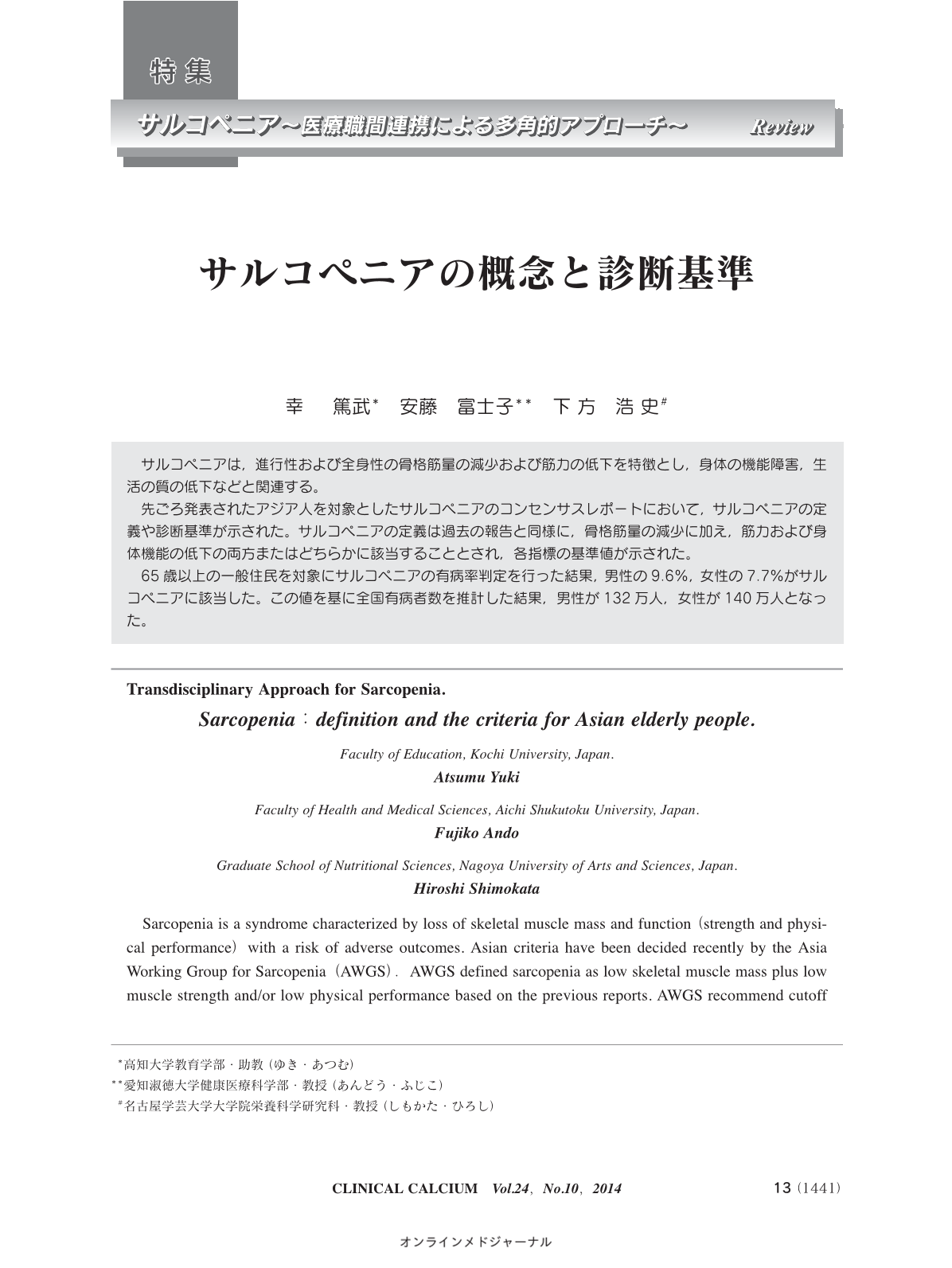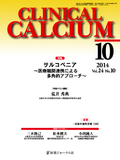Japanese
English
- 有料閲覧
- Abstract 文献概要
- 1ページ目 Look Inside
- 参考文献 Reference
サルコペニアは,進行性および全身性の骨格筋量の減少および筋力の低下を特徴とし,身体の機能障害,生活の質の低下などと関連する。 先ごろ発表されたアジア人を対象としたサルコペニアのコンセンサスレポートにおいて,サルコペニアの定義や診断基準が示された。サルコペニアの定義は過去の報告と同様に,骨格筋量の減少に加え,筋力および身体機能の低下の両方またはどちらかに該当することとされ,各指標の基準値が示された。 65歳以上の一般住民を対象にサルコペニアの有病率判定を行った結果,男性の9.6%,女性の7.7%がサルコペニアに該当した。この値を基に全国有病者数を推計した結果,男性が132万人,女性が140万人となった。
Sarcopenia is a syndrome characterized by loss of skeletal muscle mass and function(strength and physical performance)with a risk of adverse outcomes. Asian criteria have been decided recently by the Asia Working Group for Sarcopenia(AWGS).AWGS defined sarcopenia as low skeletal muscle mass plus low muscle strength and/or low physical performance based on the previous reports. AWGS recommend cutoff values for muscle mass(7.0 kg/m2 for men and 5.4 kg/m2 for women by using dual X-ray absorptiometry, and 7.0 kg/m2 for men and 5.7 kg/m2 for women by using bioelectrical impedance analysis),handgrip strength(<26 kg for men and <18 kg for women),and usual gait speed(<0.8 m/s).The prevalence of sarcopenia in Japanese elderly men and women diagnosed using Asian criteria was 9.6% and 7.7%,respectively. The estimated number of prevalent cases of sarcopenia in Japanese elderly men and women was approximately 1.3 million and 1.4 million, respectively.



